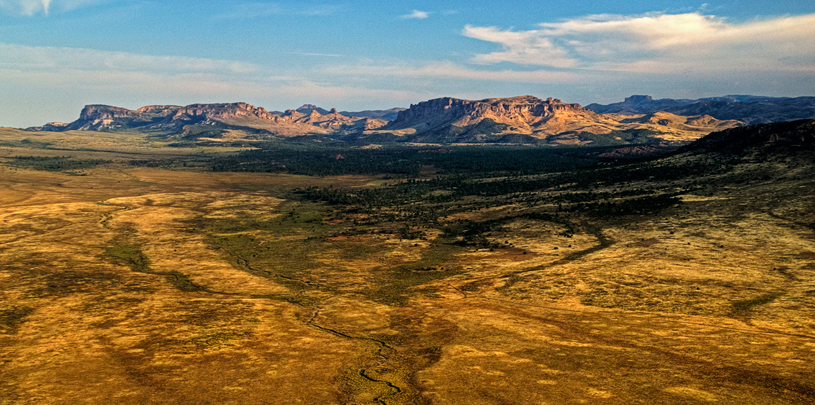
 by Tim Peterson, Director of Utah Wildlands
by Tim Peterson, Director of Utah Wildlands
The Dixie National Forest is proposing to change their motor vehicle travel management plan on the Powell Ranger District, opening 50 miles of roads and an additional 34 miles of trails to motorized use – and we need you to add your voice by February 20th to help change their minds!
These lands, which were closed to motorized vehicle use in the Dixie’s 2009 Travel Plan, were protected for their conservation, scenic, and geologic values, as well as their high-quality wildlife habitat.
Named for John Wesley Powell, the sprawling ranger district stretches from the East Fork of the Sevier River on the north to the Sunset Cliffs on the south, and from the town of Panguitch, Utah, on the west to Bryce Canyon National Park on the east. If you have driven from the Grand Canyon to Bryce, you’ve passed through the Powell Ranger District of the Dixie National Forest on the Red Canyon Scenic Byway and know its beauty!
Now, the Dixie National Forest is proposing to undo much of the good work they accomplished in their 2009 motorized travel plan decision. The 2009 plan took positive steps to protect stunning wilderness-quality roadless areas and high-quality hunting and fishing from damage done by decades of irresponsible off-road vehicle use. The Powell Ranger District proposes to re-open roads, which in many cases have been closed, blocked, ripped and re-vegetated. That's right – they want to re-build and re-open roads and motorized trails that had been closed following five years of public involvement and careful study.
In an effort to keep some spaces wild on a big landscape adjacent to Bryce Canyon National Park, tell the Forest Service that you care about roadless areas. You can help keep routes closed to motorized use by sending an email to the Forest Service by Friday, February 20th, requesting:
1. An EIS is not needed to make the strictly necessary changes to the Travel plan (i.e. resource-related re-routes and legitimate corrections to small errors made in the 2009 plan).
2. Apart from correcting these errors, routes that were closed to motorized use in the 2009 Motorized Travel Plan decision need to STAY closed.
3. Keep roads and trails in the Inventoried Roadless Areas off limits to motorized vehicles to protect quality deer and elk hunting and the wilderness character of these outstanding areas.
4. Do not open routes needed for occasional administrative use (e.g., wildlife management) to the public. There is no resource need to invite the general public to use these routes whenever they like.
The more personal and specific you are in your letter, and the less you simply cut-and-paste, the better. But most importantly, please do comment. We provide more background and route-specific comments here.
Send your personalized comments to: comments-intermtn-dixie-powell@fs.fed.us by Friday, February 20th.
Find the complete Forest Service Proposed Action here.
You have the opportunity to comment on how you think some of the most beautiful landscapes in Utah should be managed for the next generation to come.
Read MoreTree ring data helps scientists and land managers protect old-growth pinyon and juniper trees.
Read MorePack your camera and head for the trees! The Colorado Plateau has some of the best displays of fall foliage all season long.
Read More